The construction industry has long relied on traditional pavement materials such as concrete and asphalt, which have significant environmental consequences, including high carbon footprints, resource depletion, and waste generation. As our understanding of these impacts grows, exploring alternative pavement materials that can support sustainable development and create a greener future for infrastructure projects becomes increasingly crucial.
| Traditional Asphalt | Traditional Concrete | Recycled Asphalt | Bio-Asphalt | Permeable Pavers | Polymer-Enhanced Soil | |
|---|---|---|---|---|---|---|
| Environmental Impact | High carbon footprint, resource depletion | High carbon footprint, resource depletion | A lower carbon footprint reduces waste | Renewable materials, lower carbon footprint | Enhances groundwater recharge, low environmental impact | Minimal environmental impact uses on-site soil |
| Cost | Moderate to High | High | Lower | Variable, generally moderate | Moderate | Low |
| Durability | High, but prone to cracking | Very high, but may require reinforcement | Comparable to new asphalt | Variable, generally high | High | High |
| Maintenance Requirements | High, frequent resurfacing | Moderate to high, occasional repairs needed | Moderate, similar to new asphalt | Low to moderate | Low | Low, easy repairs |
| Sustainability | Low | Low | Moderate | High | High | High |
| Examples of Use | Roads, driveways, parking lots | Highways, urban roads, parking structures | Roads, driveways | Bike paths, local roads | Driveways, parking lots, sidewalks | Dirt roads, pathways |
Environmental Impact Comparison of Pavement Materials
| Material | Carbon Footprint | Resource Depletion | Waste Generation |
|---|---|---|---|
| Traditional Concrete | High | High | Moderate |
| Traditional Asphalt | Moderate | High | Low |
| Recycled Materials | Low | Low | Very Low |
| Permeable Pavement | Low | Moderate | Low |
| Porous Asphalt/Concrete | Moderate | Moderate | Low |
Cost Comparison of Pavement Materials
| Material | Initial Cost | Maintenance Cost | Life Cycle Cost |
|---|---|---|---|
| Traditional Concrete | High | Moderate | High |
| Traditional Asphalt | Moderate | High | Moderate |
| Recycled Materials | Low to Moderate | Moderate | Low to Moderate |
| Permeable Pavement | High | Low | Moderate to High |
| Porous Asphalt/Concrete | Moderate to High | Moderate | Moderate to High |
As an experienced civil engineer with over 25 years of expertise in road surface technologies, I, Steve Axton, have witnessed the growing need for sustainable pavement solutions that mitigate environmental impact while maintaining structural integrity and durability.
Benefits of using alternative materials for pavement construction
By using alternative pavement materials, we can significantly reduce the environmental burden associated with road construction while promoting economic and social benefits. These materials offer innovative solutions that minimize waste, conserve natural resources, and enhance community well-being through improved air quality, stormwater management, and safety features.
Types of Alternative Pavement Materials
Here are the details of various alternative pavement materials that are paving the way for a greener future in infrastructure development in my experience. Since there is vast potential for natural and reused materials as viable alternatives for pavement construction, I will cover all Alternative Pavement Materials.
Natural Rock as an Alternative Pavement Material
Nature has provided us with an abundance of rock formations that can be harnessed as sustainable alternatives to traditional pavement materials. These natural rocks not only offer durability and strength but also reduce the environmental impact associated with resource extraction and manufacturing processes.
Benefits of Natural Rock Pavements
Minimal Processing:
Natural rocks often require minimal processing, reducing the energy consumption and carbon emissions associated with material production.
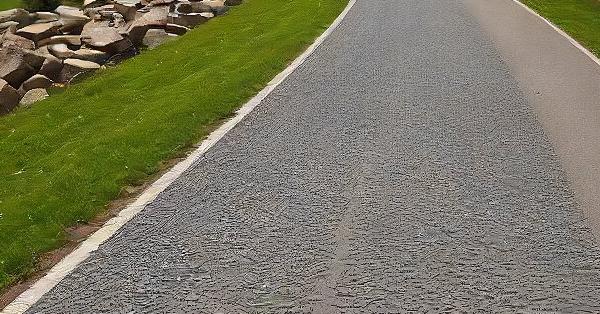
Locally Sourced:
Many regions have access to local rock deposits, minimizing transportation costs and supporting local economies.

Aesthetically Pleasing:
Natural rock pavements can enhance the visual appeal of landscapes, blending seamlessly with natural surroundings.
Permeability:
Some natural rocks, such as porous limestone, exhibit inherent permeability, contributing to effective stormwater management.
Considerations and Applications
While natural rock pavements offer numerous benefits, it is essential to evaluate the specific rock type’s correctness for pavement construction. Factors such as skid resistance, durability, and hardness should be carefully evaluated. Natural rock pavements are commonly used in low-traffic areas, pedestrian pathways, and recreational trails, where their visual appeal and environmental paybacks can be fully appreciated.
Reused By-Product Aggregates As Alternative Pavement Material
The construction industry has involved the new concept of “waste to resource,” repurposing many industrial by-products as alternative aggregates for road construction. By diverting these materials from landfills and incorporating them into pavement applications, we can reduce waste generation, protect natural resources, and lower the environmental impact of infrastructure projects.
Air-Cooled Blast Furnace Slag (BFS) formation, and its use as aggregate in road construction
Air-Cooled Blast Furnace Slag (BFS) is a by-product of the iron and steel industry, formed during the melting process when melted slag is cooled under ambient conditions. BFS shows superb mechanical properties and can be effectively utilized as a coarse aggregate in road construction, offering a justifiable alternative to traditional aggregates.
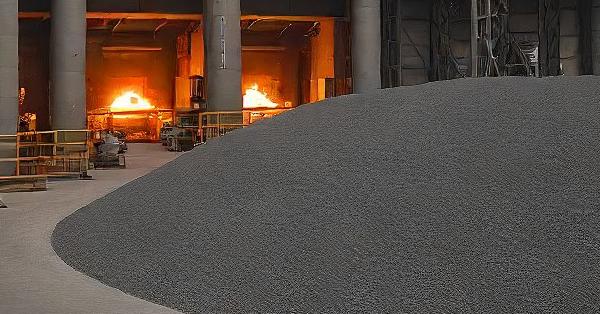
Granulated Blast Furnace Slag (GBS), its rapid quenching process, and its application as fine aggregate
Granulated Blast Furnace Slag (GBS) is another by-product of the iron and steel industry, produced by rapidly reducing melted slag with water or air. This process results in a smooth, granular material that can be used as a fine aggregate in various pavement applications, including concrete and asphalt mixes.
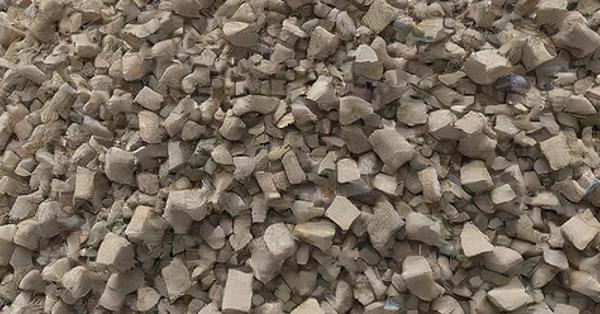
Steel furnaces slag their components, and it’s used as crushed aggregate
Steel furnace slag is a by-product generated during the steelmaking process, consisting primarily of calcium silicates and other compounds. This material can be crushed and processed into aggregates suitable for road construction, offering a durable and cost-effective alternative to natural aggregates.
Ashes
Examination of furnace and incinerator ashes, their types, and their potential uses in road construction
Ashes from various industrial processes, such as coal combustion and municipal solid waste incineration, can be repurposed for pavement applications. These ashes, including fly ash and bottom ash, can be utilized as supplementary cementitious materials or fine aggregates in concrete and asphalt mixes, contributing to sustainable construction practices.
Manufactured Aggregates
Purposefully made aggregates from certain materials and by-products of mineral extraction
These purposefully made aggregates offer unique properties and can be tailored to specific pavement applications, further expanding the range of sustainable alternatives.
Foamed Blast Furnace Slag (FBS) its pumice-like properties, and its use as lightweight aggregate
By aerating blast furnace slag at a controlled rate while it is in the molten state, Foamed Blast Furnace Slag (FBS) is the lightweight aggregate obtained. The pumice-like structure of the resulting material gives it lower density and better insulating characteristics thus making it an ideal choice for light concrete applications used in road construction.
Fly Ash Aggregates, their application in lightweight concrete
Fly ash, a by-product of coal combustion can be processed into lightweight aggregates suitable for concrete production. These fly ash aggregates offer excellent thermal and acoustic insulation properties, making them ideal for applications where weight reduction and improved insulation are desired, such as in bridge decks or precast concrete elements.
Expanded Clays, Slates, and Shales Heating clays, slates, and shales create aggregates for road construction as an alternative pavement solution
Through a process of controlled heating and expansion, certain clay minerals, slates, and shales can be transformed into lightweight aggregates. These expanded materials exhibit excellent insulating properties and can be used in various pavement applications, including lightweight concrete for bridges and precast elements.
Manufactured Sand from suitable materials and its uses as an alternative pavement solution
When natural sand is lacking or used up in certain areas, it is possible to make manufactured sand from appropriate substances like concrete aggregate, rock, and slag. This technique involves crushing and classifying the parent material to achieve particle sizes that are equivalent to those of natural sands; thus, offering a viable substitute for various pavement applications such as asphalt mixes and concrete.
Polystyrene Aggregate A lightweight concrete as an alternative pavement solution
Waste-expanded polystyrene, commonly used in packaging and insulation materials, can be combined with normal aggregates to produce lightweight concrete for pavement applications. This innovative approach not only reduces waste generation but also offers improved thermal and acoustic insulation properties, making it a viable option for specialized pavement applications.
The Maltene Cure
Maltenes and Asphaltenes as the components of bitumen and their roles in asphalt
Bitumen, the primary binder in asphalt, is composed of two main components: maltenes and asphaltenes. Maltenes are the lighter, oily fractions that provide flexibility and workability to asphalt, while asphaltenes are the heavier, rigid components responsible for their strength and durability.
Over time, the maltenes in asphalt gradually oxidize and deplete, causing the pavement to become brittle and susceptible to cracking. This aging process is accelerated by environmental factors such as heat, ultraviolet radiation, and exposure to air and water.
Mechanism of Maltene Rejuvenators by spraying on elixirs penetrate and restore maltenes
Maltene rejuvenators are state-of-the-art products designed to revitalize aging asphalt pavements by replenishing the depleted maltene fractions. These rejuvenators are typically sprayed onto the surface of the pavement, where they penetrate and diffuse into the asphalt matrix.
The renewing agents, often derived from petroleum-based oils or bio-based materials, mimic the chemical composition and properties of the original maltenes. As they penetrate the asphalt, they restore flexibility, reduce fragility, and extend the service life of the pavement.
Benefits of Maltene Rejuvenators
Extending road life and reducing the need for complete resurfacing
In terms of economy and environment, the use of maltene rejuvenators has a lot of benefits. They can be used to lengthen the life of pavements by restoring the aged fractions in asphalt.
This method is responsible for saving a significant sum that could have been spent on road maintenance and repair. Besides, raw material consumption decreases as well as mitigation of environmental impact caused by major construction activities. Additionally, maltene rejuvenators can help to enhance ride quality and safety through the reduction of crack and pothole formation.
Case Studies and Applications
Examples of successful implementation of maltene rejuvenators
Maltene rejuvenators have been implemented effectively in various projects across the world; thus indicating their efficiency as well as potential for wider usage. My personal experience has proven incredibly amazing outcomes from these treatments.
In one specific case study, a heavily trafficked highway located in a big city was treated using a maltene rejuvenator application. The result was more than adding several years onto its service life but also improving its condition to provide a smoother riding experience with lower maintenance cost.
As a proponent of sustainable practices, I strongly advocate for the wider adoption of maltene rejuvenators as a cost-effective and environmentally friendly solution for pavement preservation.
Bio Byways
Bio-Asphalt as the alternative pavement solutions
Exploration of bio-asphalt as a sustainable alternative to traditional bitumen
In the pursuit of more sustainable pavement solutions, researchers and engineers have turned their attention to bio-asphalt – a promising alternative to traditional petroleum-based bitumen. Bio-asphalt is derived from renewable plant-based sources, offering a greener and more environmentally friendly option for road construction and maintenance.
Ingredients of Bio-Asphalt
Common materials used: cooking oil, soybean oil, linseed oil, microalgae, and swine manure
The array of ingredients used in making bio-asphalt is wide and innovative. Ingredients such as cooking oil, soybean oil, linseed oil, microalgae, and even swine manure are among the commonly available ones. These renewable feedstocks are transformed to resemble classical bitumen in terms of properties and performance specifications.
Research and Development In Bio-Oil and Bio Asphalt
Key research findings from institutions like Iowa State University and Rutgers University
Several institutions like Iowa State University and Rutgers have been leading researchers in the field of bio-asphalt development. Through their studies they have established the possible advantages and issues that come with this new technology.
The Transport Research Arena (TRA) Conference showcased research on innovative biobinders for sustainable road pavements, focusing on the BioRoadPAV Project. Led by José Neves and a team of researchers from various institutions in Portugal, the project aims to develop new road biobinders derived from bio-oil produced through an innovative thermochemical liquefaction process of biomass. The project, spanning from 2021 to 2025, seeks to contribute to the sustainable development goals set by the United Nations. The paper presented at the conference outlined the project’s activities, from laboratory design development to full-scale road construction, and highlighted preliminary results regarding bio-oil and biobinder production and characterization. These initial findings confirmed the feasibility of using bio-oil and encouraged further research into optimizing the bio binder and its application in asphalt mixtures.
In my interaction with scientists like Neves, José Manuel Coelho Das from these institutions, I have witnessed some ground-breaking discoveries on bio-asphalt. Through these investigations which range from adjusting the proportions of the various binders to understanding their performance over time future pavements will be more sustainable.
PolyPavement Taming the Dirt Road
Water-Based Polymers for Road Hardening Water-based polymer technologies for hardening dirt roads
In many regions around the world, dirt roads remain a common sight, posing challenges in terms of maintenance, dust control, and environmental impact. However, innovative water-based polymer technologies offer a solution for hardening and stabilizing these unpaved roads, transforming them into durable and environmentally friendly surfaces.
Environmental and Economic Benefits of Polu Pavement
Cost savings and reduction in environmental impact by using on-site soil
One of the key advantages of water-based polymer road hardening is its ability to utilize on-site soil as the primary construction material. This approach not only results in significant cost savings but also reduces the environmental impact associated with mining and transporting traditional pavement materials.
By combining the existing soil with the polymer binder, these technologies create a hardened surface that is resistant to erosion, dust generation, and rutting, while also minimizing the need for costly maintenance and repairs.
Technical Aspects of PolyPavement
How PolyPavement Works
PolyPavement, a cutting-edge water-based polymer technology, establishes a robust and flexible framework that links soil particles. This framework is impervious to water, and frost cycles and can withstand chemical attack over a long period hence it is durable.
Better than ordinary Asphalt
PolyPavement has several advantages over traditional asphalt pavements such as shorter construction duration, less CO2 emissions, and easy recycling or reuse at the end of its service life.
Market and Applications
Current market adoption
While water-based polymer road hardening technologies have already gained traction in various markets, particularly in remote and rural areas, there is significant potential for further expansion into greener markets.
Potential for expansion into greener markets
As an advocate for sustainable solutions, I foresee a future where these technologies are widely adopted in urban and suburban environments, contributing to the development of more environmentally conscious infrastructure. The versatility of water-based polymer road hardening, coupled with its cost-effectiveness and eco-friendly nature, makes it an attractive option for municipalities, developers, and communities seeking to reduce their environmental footprint while addressing their infrastructure needs.
Street Smarts As the Future of Intelligent Roads
Landscape of smart road technologies
The future of transportation is on the cusp of a revolution in both smart technology and our approach to road networks’ design, production, and maintenance. Smart road systems are no longer just an idea from science fiction; they are fast turning into reality courtesy of improving sensor technologies, communication networks, and data analytics.
Vehicle-to-Everything (V2X) Data Ecosystems Panasonic’s virtual brain technology for autonomous cars
A significant example of this is Panasonic’s leading-edge Vehicle-to-Everything (V2X) data ecosystem. This new system works as a virtual brain for autonomous vehicles by allowing them to communicate in real-time with other cars, infrastructure as well as connected devices.
By integrating these V2X data ecosystems with smart road technologies, cars can be provided with important information like weather conditions or jams or even other dangers that would boost safety and allow smooth movement.
Benefits of Alternative Pavement Materials
Environmental, economic, and social benefits associated with using alternative pavement materials
The adoption of alternative pavement materials, including natural and reused materials, offers a multitude of benefits that extend beyond environmental considerations. By embracing these innovative solutions, we can achieve economic advantages through cost savings and resource efficiency, while simultaneously promoting community well-being and contributing to a more sustainable future.
Environmental Benefits
- Reduced carbon footprint and energy consumption
- Conservation of natural resources
- Diversion of waste materials from landfills
- Minimized environmental impact from resource extraction and processing
Economic Benefits
- Cost savings through the reuse of by-products and waste materials
- Reduced material transportation costs by utilizing locally sourced alternatives
- Long-term cost-effectiveness due to improved durability and lifespan
Social Benefits
- Enhanced community aesthetics and integration with natural surroundings
- Improved stormwater management and flood mitigation
- Promotion of sustainable practices and environmental stewardship
Open Concrete Grids An an Alternative Payment Solution
What are Open Concrete Grids?
Open concrete grids, also known as concrete grid pavers or permeable pavers, where open concrete combines with grid-like structures. They were made to allow plants to grow inside them to make it a permeable cover that enables infiltration of stormwater hence decreasing runoff.
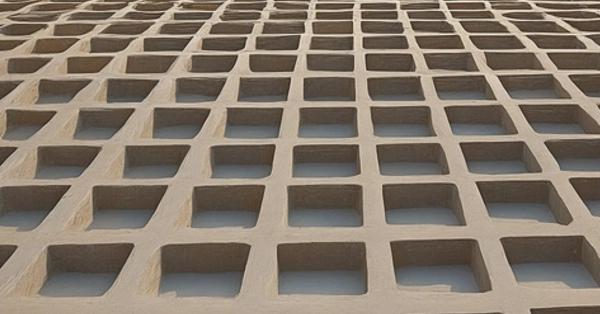
Benefits of open concrete grids
Stormwater Management:
Open concrete grids are effective in mitigating urban floods and reducing the load on stormwater management systems by allowing water to percolate through open spaces into the underlying soil.
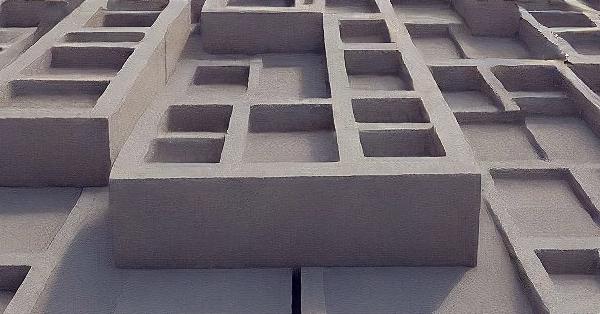
Environmental Benefits:
Plants in these grids act as air purifiers, moderate the heat island effect, and contribute towards cleaner air thus promoting healthier urban areas.
Aesthetics:
Open concrete grids have an attractive appearance that mimics natural landscapes which makes them ideal for landscaping purposes and also enhances their aesthetic value in public areas.

Applications and Considerations.
Open concrete grids are often employed in low-traffic areas such as pedestrian walkways, parking lots or residential driveways. Their installation entails proper soil preparation and taking into account the drainage characteristics of the underlying area for best results. Regular maintenance like weeding out and replenishing the infill material helps sustain their permeability and look.
Recycled Asphalt and Concrete
Re-Used Materials
Sustainable alternatives which include recycled asphalt and concrete have emerged because they bring about significant environmental and economic benefits over traditional pavement materials. By reusing and repurposing these products, we can minimize waste generation, preserve natural resources as well as decrease the carbon footprint linked with pavement construction.
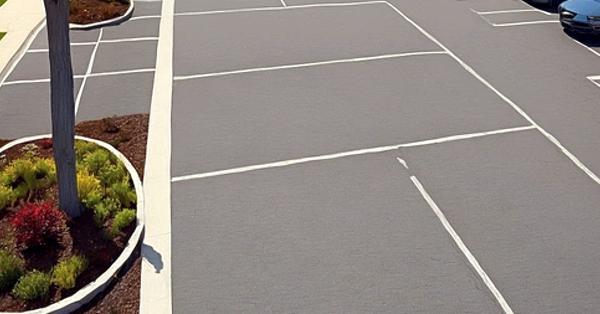
Reused Asphalt
Reused Asphalt Pavement (RAP): RAP comes from the milling or crushing of existing asphalt pavements thus allowing them to be recycled and included in new asphalt mixes.
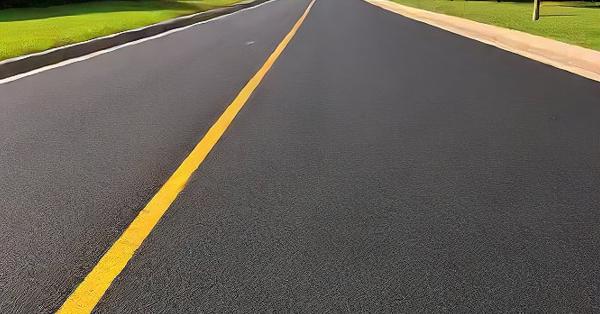
Merits:
The use of RAP cuts down on demand for virgin materials, conserves natural resources, and lowers costs. It also aids in diverting waste from landfills and minimizes the effect on the environment caused by the production of asphalt.
Recycled Concrete
Recycled Concrete Aggregate (RCA):
RCA is obtained through crushing and processing demolition concrete whereby such material may be reused as a replacement for virgin aggregates in new concrete mixes.

Advantages:
When RCA is used, it reduces the consumption of natural aggregates; and decreases disposal costs; while reducing resource consumption and environmental damage associated with concrete production.
Success in implementing recycled asphalt and concrete needs thorough testing of materials, mix design, and quality control processes to meet strength, durability, and performance requirements. An important aspect is also following the set regulations and industry standards which are necessary for ensuring safe utilization of these reused substances in pavement projects.
Porous Pavement For Increased Permeability and Drainage
A permeable pavement is referred to as porous pavement, which is a new approach that lets water go through its porosity making it possible to manage stormwater and reduce urban floods. It can be done using several types of materials like permeable paver, porous asphalt or permeable concrete.
Benefits of Porous Pavement
Storm Water Management:
Pervious pavement reduces stormwater runoff by allowing water to soak into the ground thereby reducing chances of flooding in the urban areas.
Water Quality Enhancement:
As rain infiltrates the surface, it gets rid of contaminants, removes sediments, and therefore leads to better groundwater recharge and improved water quality.
Reduced Hydroplaning Risk:
The fact that the pavements are porous allows for better drainage thus reducing the occurrence of hydroplaning leading to safe use by motorists and pedestrians alike.
Applications and Considerations
Porous paving can be employed in areas such as parking lots, residential streets, pedestrian walkways, and lightly traveled roadways. However, this must be preceded by careful examination of soil conditions beneath it, its ability to drain water away with ease as well as maintenance needs. To prevent blockages that impair performance over time safeguarding should include periodic vacuuming or pressure washing techniques on these surfaces.
Permeable Pavers For Mixing Permeability and Long Life
Porous pavers are paving stones with open spaces or gaps that allow water to seep through the surface. These stones are usually made from concrete, clay, or recycled materials and come with a variety of infill materials like crushed stone or porous soil which can enhance the drainage.
Merits of Porous Paving
Stormwater Management:
Like permeable pavements permeable pavers are effective at managing stormwater runoff by allowing water to filter through the surface into the underlying soil/and or drainage system.
Aesthetic Appeal:
The range of colors, textures, and patterns in permeable pave makes them suitable for landscaping and hardscaping applications having different needs.
Durability:
Good installation and maintenance practices enable these types of pavers to remain intact even when subjected to heavy loads over time thereby making them good for driveways as well as parking areas among other uses.
Applications and Considerations
In residential and commercial settings such as driveways, patios, walkways, outdoor plazas, etc., one can always find previous pavings. Proper base preparation along with underdrainage systems must be given priority during their installation while regular maintenance should ensure that there is no blockage to prevent free flow water infiltration on them over time.
Material Properties
| Material | Compressive Strength (MPa) | Flexural Strength (MPa) | Permeability (cm/s) | Density (kg/m³) | Thermal Conductivity (W/m·K) |
|---|---|---|---|---|---|
| Recycled Concrete Aggregate | 35 – 45 | 4.5 – 6.0 | 1.2 × 10^-3 | 2300 – 2400 | 1.6 – 2.0 |
| Porous Asphalt | 2.5 – 4.0 | 0.8 – 1.2 | 0.15 – 0.25 | 1900 – 2100 | 0.8 – 1.2 |
| Geopolymer Concrete | 40 – 60 | 5.0 – 7.5 | 5.0 × 10^-4 | 2200 – 2400 | 0.4 – 0.8 |
| Lightweight Aggregate Concrete | 25 – 35 | 3.5 – 5.0 | 2.0 × 10^-3 | 1600 – 1800 | 0.3 – 0.5 |
| Bio-Asphalt (Soybean Oil) | – | – | – |
In my experience, porous asphalt and concrete have proven to be versatile and efficient alternatives, especially in regions prone to heavy rainfall or areas where noise reduction is a priority. However, it’s important to carefully consider their installation and maintenance requirements to ensure optimal performance and longevity.
Benefits of Alternative Pavement Materials
Examination of the environmental, economic, and social benefits associated with using alternative pavement materials
The use of alternative pavement materials carries along with it a lot of advantages other than the environmental ones. We can save costs in the economy and make it financially sustainable in terms of long-term planning by adopting these groundbreaking technologies, thereby achieving relevant community health, safety, and well-being at large.
Environmental Impact Reduction
Exploration of how alternative pavement materials contribute to reducing carbon footprint and minimizing waste generation
This is why alternative pavement materials are important; they have the potential to minimize the environmental effects of road construction. We can cut down on carbon emissions, save natural resources, and divert waste from landfills through use of recycled substances, porous concrete as well as asphalt.
I have seen how these products can make a difference in dealing with ecological issues. Take for instance a project that involved the utilization of crushed stones and asphalt that had been demolished thereby decreasing demand for new inputs; thus saving numerous tones upon tones of debris being dumped into dumpsites.
Cost-effectiveness
Analysis of the cost savings potential and long-term financial benefits of adopting alternative pavement materials
While the initial costs of some alternative pavement materials may be higher than traditional options, their long-term financial benefits cannot be overlooked. By reducing material costs through the use of recycled materials and minimizing maintenance requirements through permeable and porous solutions, substantial cost savings can be achieved over the life cycle of the pavement.
I’ve been involved in numerous projects where the adoption of alternative pavement materials has resulted in significant cost savings, both in terms of construction and long-term maintenance expenses. These savings can be reinvested into other infrastructure projects or redirected towards community development initiatives.
Community Health and Safety
Discussion on how alternative pavement materials can improve air quality, enhance safety for pedestrians and cyclists, and promote overall community well-being
Apart from their ecological and monetary upsides, these asphalt substitutes can also be advantageous to the well-being of the community. They are the unblocking or draining materials on pavements that will help in reducing the levels of pollution where water stagnates by draining it off, this water usually contains dangerous elements in it e.g. bacteria causing disease. These materials also create a safer pedestrian and cyclist environment through better grip and visibility during rainy weather.
The changes that have occurred in regions due to implementation of alternate pavement materials are breath taking as they give residence favorable places for living, working and playing. The sense of fulfillment that one gets from being part of a long-term visionary project is very satisfying too.
Implementation Challenges and Considerations
Identification of challenges and considerations in implementing alternative pavement materials in infrastructure projects
However, it is not all smooth sailing to adopt these materials for their intended use. This is why it is important to address such factors in order to ensure that the integration process succeeds and that there is a long-term utilization of these novel solutions.
Regulatory Framework
Regulatory requirements and standards governing the use of alternative pavement materials
This adoption is normally governed by local, state and federal regulatory requirements and standards. They are meant to ensure that these materials meet specific performance criteria, safety standards as well as environmental guidelines.
I have crossed through the regulatory frameworks several times before because I am an expert in this field and I can’t stress enough the importance of keeping ahead with new rules so as to work within the law while developing alternative pavement materials.
It is on such a note that I will encourage you all to accept these innovative solutions and help build a sustainable future. For together we can establish resilient infrastructure that is eco-friendly leaving behind only what is needed today but also taking care of those who come tomorrow.
About Me:
With over 25 years of experience in civil engineering, specializing in road surface technologies, I, Steve Axton, have dedicated my career to exploring and implementing sustainable pavement solutions. Through my expertise and hands-on involvement in numerous projects, I’ve witnessed the transformative power of alternative pavement materials firsthand. My passion lies in finding innovative ways to reduce our environmental impact while promoting economic and social benefits, paving the way for a greener future in infrastructure development.
Ongoing Research Projects
| Research Institution | Project Title | Focus Area | Principal Investigator | Funding Source |
|---|---|---|---|---|
| Massachusetts Institute of Technology | Development of Self-Healing Bio-Concrete for Durable Pavements | Bio-based materials, self-healing concrete | Dr. Samantha Lee | National Science Foundation |
| University of California, Los Angeles | Evaluation of Permeable Pavement Systems for Stormwater Management in Arid Regions | Permeable pavements, stormwater management | Dr. Michael Roberts | California Department of Transportation |
| Georgia Institute of Technology | Recycled Plastic Aggregate for Sustainable Pavement Construction | Recycled materials, plastic aggregates | Dr. Alejandra Gonzalez | Plastics Industry Association |
| Purdue University | Advanced Characterization of Geopolymer Concrete for Pavement Applications | Geopolymer concrete, sustainable binders | Dr. Jason Lee | U.S. Department of Energy |
| University of Texas at Austin | Thermal and Acoustic Performance of Lightweight Pavement Materials | Lightweight aggregates, thermal insulation, noise reduction | Dr. Emily Thompson | Texas Department of Transportation
|
